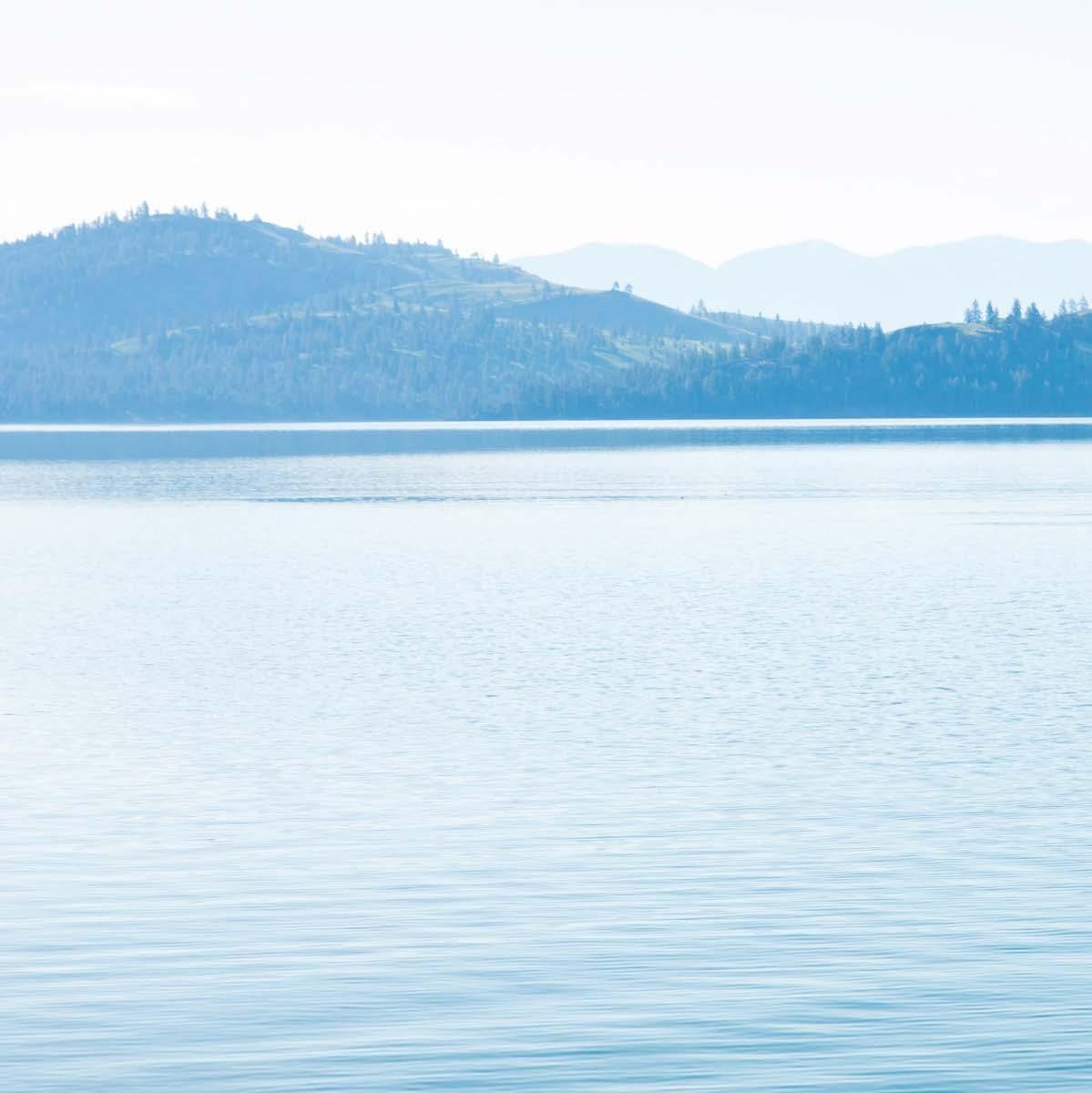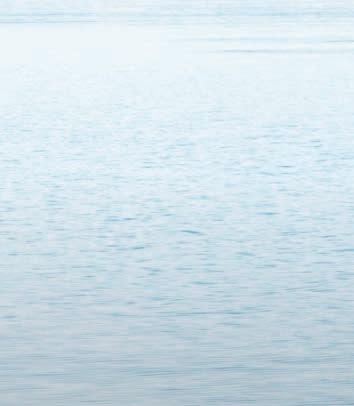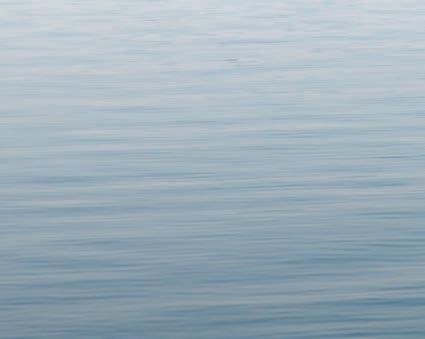ANNUAL REPORT
2022 UPPER COLUMBIA CONSERVATION COMMISSION (UC ³)















My role as Chair of the Upper Columbia Conservation Commission (UC³) these past two years has given me an elevated view of the hard work and dedication Montanans have brought to the fight of protecting the Columbia River watershed from aquatic invasive species (AIS). While that is a figurative statement, quite literally I can see the immensity of the watershed we are responsible for protecting. On a recent flight into Portland, Oregon, as we glided over the mighty Columbia, my mind meandered 600+ miles upstream to its headwaters and my home in Glacier National Park.
As a group we continue to celebrate our successes, but we know we cannot relax our e orts. The threat of quagga and zebra mussels is knocking on our door, with new established populations leap-frogging their way ever closer to Montana’s eastern border. The unique structure and mission of the UC³ makes the task of meeting our growing challenges possible through coalition building and successful collaboration among public, private and nonprofit professionals.

Perhaps most notably, we acknowledge that by working together in relatively small teams, we have been able to e ectively and e ciently achieve our common goal—to protect the Upper Columbia watershed from the threat of aquatic invasive species. We appreciate each other’s e ort in doing this important work on behalf of Montanans and for the benefit of the entire Columbia River watershed.
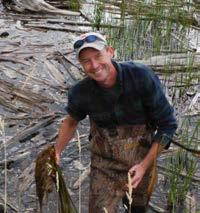
Close communication and coordination on the aquatic invasive species issue is now more important than ever. With the recent detection of zebra mussels for the first time ever in a Colorado reservoir and an infestation discovered in Pactola Reservoir located in South Dakota, just 70 miles from the Montana border, mussels are closer than ever before. UC³ brings together partners to help strengthen, improve and develop innovative ways in which we can protect our waters from the continued threat of AIS.

Continuing to improve AIS prevention efforts is now more important than ever before, as mussels are getting closer and closer to Montana. In 2022, zebra mussels made a huge leap from existing infestations when they were detected in the state of Colorado for the first time. And with the discovery of a large infestation in Pactola Reservoir, South Dakota this year, mussels are now just a mere 70 miles from Montana's eastern border.

In 2022, the Upper Columbia Conservation Commission (UC³) saw its sixth year filled with great successes in the AIS community alongside on-going challenges in preventing the continuous threat that AIS pose to Montana’s beautiful waterways. This past year, the Montana Fish, Wildlife & Parks (FWP) program celebrated the delisting of Tiber Reservoir from its “positive” for invasive mussel larvae status after five years of diligent sampling, monitoring, and consistent prevention measures by their AIS sta . Along with this success inside the state of Montana, the threat of invasive mussels in surrounding states continues to creep closer and closer. In late 2022, zebra mussels were discovered for the first time ever in the state of Colorado and just 70 miles from Montana’s eastern border in Pactola Reservoir, South Dakota. The FWP program has provided support to our neighboring states and is working closely with them to improve their protection measures. We would like to thank our commissioners, ex-o cio members, committee participants, AIS partners, and the incredibly dedicated Montana Fish, Wildlife & Parks (FWP) sta for consistently strengthening and expanding one of the strongest AIS prevention programs in the country.

This past year, UC³ implemented the goals and objectives outlined in our 2020 – 2023 Strategic Work Plan, including but not limited to:
• Increasing AIS awareness through education and outreach
• Coordinating and expanding monitoring and citizen science e orts
• Taking legislative action to address gaps related to AIS prevention e orts
• Collaborating with partners to better protect Montana’s waterbodies from the threat of AIS
This report provides highlights of our accomplishments, projects, sources of funding, and expenditures for the fiscal year 2022 (July 1, 2021 – June 30, 2022). Together we can ensure that the beautiful Columbia River Basin remains mussel free for years to come, and we are honored to have the privilege to assist with these e orts.
Kate Wilson, Commission Administrator Montana Department of Natural Resources & Conservation
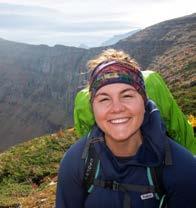
Cassidy Bender, Commission Coordinator Montana Department of Natural Resources & Conservation
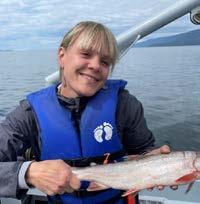
Representative Neil Duram
Big Sky Watershed Corps Member (2022)
AmeriCorps (Missoula)

Libby
Representing: Kootenai River Basin


Voting Member (Libby)
Martin Charlo
Tribal Council Secretary
Representing: Confederated Salish & Kootenai Tribes

Voting Member (Pablo)
Michelle Cox Invasive Species Coordinator - Region 1
Representing: U.S. Forest Service Ex-Officio Member (Missoula)
Senator Mike Cuffe
Senate District 1 (Republican)
Ex-Officio Legislative Member (Eureka)
House District 2 (Republican)
Ex-Officio Legislative Member (Eureka)
Senator Janet Ellis

Senate District 41 (Democrat)
Ex-Officio Legislative Member (Helena)
Representative David Fern
House District 5 (Democrat)
Ex-Officio Legislative Member (Whitefish)



Andrew Gorder
Legal Director (Clark Fork Coalition)
Representing: Upper/Middle Clark Fork River Basins


Voting Member (Missoula)
Rae Lynn Hays,
Administrator
(Lincoln Conservation District)
Representing: Conservation Districts Voting Member (Eureka)

Chris Downs
Aquatic & Physical Science Programs Leader (Glacier National Park)
Representing: National Park Service Ex-Officio Member (West Glacier)











The prevention of aquatic invasive species (AIS) introductions and spread provides significant benefits to the environment, state and local economies, and industries dependent on water such as hydropower generation and irrigation. The natural resource benefits that can be attained as a result of AIS prevention in the Upper Columbia Basin are significant.
The Columbia River Basin covers nearly 260,000 square miles. It includes the headwaters portion or “Upper Columbia,” which consists of western Montana and southeastern British Columbia. These headwaters move downstream into the states of Idaho, Washington and Oregon. The Columbia River contributes more water to the Pacific Ocean than any other river in North or South America; many states, communities, economies and industries rely on the river for benefits, such as low cost and reliable hydroelectricity, flood control, irrigation, navigation, recreation and fisheries. All of these benefits are at risk due to the threat of AIS. The economic implications of aquatic invasive species infestations could result in impacts as high as $234 million in Montana alone.
While the Columbia River Basin has many existing populations of aquatic invasive species, including flowering rush, New Zealand Mudsnails, curlyleaf pondweed, and Eurasian watermilfoil, it is still the last major river drainage in North America that remains zebra/quagga mussel free. The longer an introduction can be curbed, the more protected the native species, the less funding spent on response e orts, and the longer we have to augment the science and develop control methods that are more likely to be e ective.
Aquatic invasive species can:
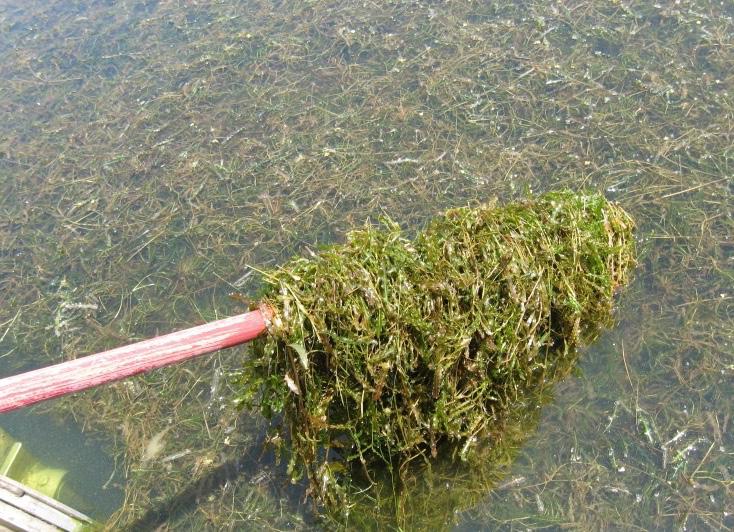
•Outcompete and displace native species
•Cause dramatic shifts in trophic dynamics, food web structure, and species abundance
•Cause local extinction of species
•Cause large-scale mortality of trees and shrubs
•Reduce the value of timber and agricultural crops and their associated products
•Alter ecosystem processes
•Modify the provision of ecosystem services
•Alter gene pools through hybridization with native species
•Alter carbon and nitrogen cycling, water use, and soil properties
•Reduce potential of recreationally hunted and fished species
•Diminish habitat aesthetics
•Alter water chemistry
•Reduce waterfront property values
•Reduce recreational swimming, boating, and fishing accessibility and enjoyability
In order to prevent these significant damages to Montana’s biodiversity, ecology, habitat, economies and way of life, management agencies, stakeholders and citizens must work together to prevent the introduction and spread of AIS into Montana’s waterways.

The mission of the UC³ is to protect the aquatic environment in Montana tributaries to the Columbia River from the threat of aquatic invasive species (AIS) to protect water resources, downstream interests, and the economic and ecological vitality of the region.
The commission was created in the 2017 legislative session by House Bill 622. The UC³ was established to foster close cooperation and coordination between international, federal, regional, state, tribal, and local water resource managers to develop and implement comprehensive Upper Columbia River Basin prevention and management measures to prevent the introduction and/or further establishment of AIS.
The UC³ serves a vital role in not only augmenting existing AIS prevention efforts in the state of Montana, but also assisting in the protection of all the bountiful downstream resources. The management agencies, stakeholders and citizens of the entire Columbia River Basin are looking to Montana to help protect them from an introduction of zebra or quagga mussels, especially with the new detections in Colorado and South Dakota bringing mussels closer to Montana than ever before. The UC³ meets quarterly and continues to leverage partnerships to coordinate, communicate, and support AIS prevention and management activities across the basin to best protect our waters from the threats posed by harmful AIS. Currently the Upper Columbia Conservation Commission consists of 12 voting members appointed by the governor of Montana who serve four-year staggered terms; four non-voting legislative members (two from the House, two from the Senate and representing both parties); and several “ex-officio” (non-voting) state and federal agency members.
The governor-appointed voting members represent:
• Confederated Salish & Kootenai Tribes
• Conservation districts
• Electric cooperatives
• Hydroelectric utilities
• Members at large
• Montana Invasive Species Council

• Private landowners
• Private industry
• Five sub-basins of the watershed (Upper/Middle Clark Fork River Basin; Bitterroot River Basin; Blackfoot/Swan River basins; Kootenai River Basin; and the Lower Clark Fork River Basin).
UC³
Montana
• Maintain and utilize three-year Education & Outreach Strategy (per statutory duties)
• Develop annual media plan for UC³ E&O
• Conduct annual industry outreach project
• Provide leadership and support on public, youth and stakeholder engagement
• Assess partner E&O e orts in basin
• Explore options/need for conducting AIS program assessment via online survey biennially
• Enhance knowledge and understanding of UC³’s work, role and responsibilities
• Encourage active engagement of E&O Committee
• Develop annual monitoring plan (per statutory duties)
• Monitor the aquatic resources of the Columbia River Basin
• Ensure continuity of Upper Columbia Lake Network (UCLN)
• Provide support and information on how to report suspected AIS
• Strive to be a source of reliable information on status of AIS in the Upper Columbia Basin
• Connect with partners and stakeholders beyond the basin
• Encourage close cooperation in AIS work among partners throughout the Columbia River Basin
• Emphasize appreciation and recognize exemplary e orts
• Provide support and assistance to state’s AIS program
• Provide cooperative, inclusive and open environment to promote coordination
• Explore options for research that adds value to AIS programs
• Provide input, feedback and recommendations to the governor and to federal and state agency directors and sta , tribal, provincial, regional and local agencies for reducing the threats from AIS
• Explore and seek to address AIS gaps and challenges for the enhancement of AIS prevention and management in the Upper Columbia Basin and/or Montana
• Develop annual monitoring plan (per statutory duties)
• Provide accounting and budgeting services
• Follow all applicable agency and board rules and requirements
• Explore options for additional funding
Early Detection & Monitoring (Standing)
Chair: Phil Matson (Flathead Lake Biological Station)
Committee Members: Tom Woolf (MISC/FWP), Craig McLane (FWP), Katie Finley-Squeque (CSKT), Kim McMahon (Pinnacle Research), Cynthia Ingelfinger (WLI), Jacob Williams (USACE), Kate Wilson (Staff), Cassidy Bender (Staff)
Committee Purpose: Document current monitoring e orts; develop and implement Annual Upper Columbia River Basin Aquatic Invasive Species Early Detection and Monitoring Plan; enhance coordination among monitoring partners; enhance citizen science monitoring e orts; seek consensus on protocols and standards.
Education & Outreach (Standing)
Committee Members: Kate Wilson (Staff), Cassidy Bender (Staff), UC³ BSWC Member, Liz Lodman (MISC), Phil Matson (FLBS), Bruce Vincent (Environomics), Katie Finley-Squeque (CSKT), FWP Information Staff (as needed)
Committee Purpose: Work with stakeholders; document existing education, outreach, and advertising e orts; address gaps in current e orts; develop and implement three-year Education & Outreach Strategy; develop and implement annual media plan, AIS Industry Outreach Project, and other outreach planning and coordination.
Legislative Committee (Ad Hoc)
Chair: Andrew Gorder (Clark Fork Coalition)
Committee Members: Phil Matson (FLBS), Tom Woolf (MISC/ FWP), Bryce Christiaens (MISC/MCWD), Stacey Schnebel (Flathead Electric/Chair), Martin Charlo (CSKT), Rae Lynn Hays (Lincoln Conservation District), Rep. Neil Duram, Rep. Dave Fern, Sen. Mike Cuffe, Sen. Janet Ellis, FWP & DNRC legal & enforcement staff (as needed)
Committee Purpose: Assess and prioritize AIS gaps, challenges, and issues. Identify and explore potential solutions and make recommendations to commission and/or Montana legislature for action to strengthen AIS prevention and management activities.
In fiscal year 2022, the UC³ continued projects related to education and outreach, monitoring, policy involvement, and enhancing coordination. We look forward to another year of working closely with our partners and raising awareness of AIS and the associated impacts among Upper Columbia Basin residents, visitors, and businesses.
This year, staff accomplished successful projects in each of the categories outlined in the 2020 – 2023 Education, Outreach and Communication Strategy. This document is available on our website and describes how the UC³ will prioritize, organize, and conduct its education and outreach activities, supporting the AIS prevention and management efforts of Montana Fish, Wildlife & Parks. Each of the projects listed below are a means of implementing an organized, comprehensive, and multidimensional partnership embodying a shared goal of managing Upper Columbia waterways for AIS.
•Development and implementation of an annual outreach and media plan in coordination with FWP and other partners in 2022 included a Clean.Drain.Dry. billboard preceding the Ravalli inspection station in western Montana (see figure 1), reminding boaters that it is mandatory to stop at inspection stations and there are consequences if they fail to do so. We also focused on the fly-fishing audience, specifically targeting out-of-state boaters who may be bringing their boat to Montana. To do this, we placed advertisements in the summer and fall editions of American Fly-Fishing magazine (see figure 2).
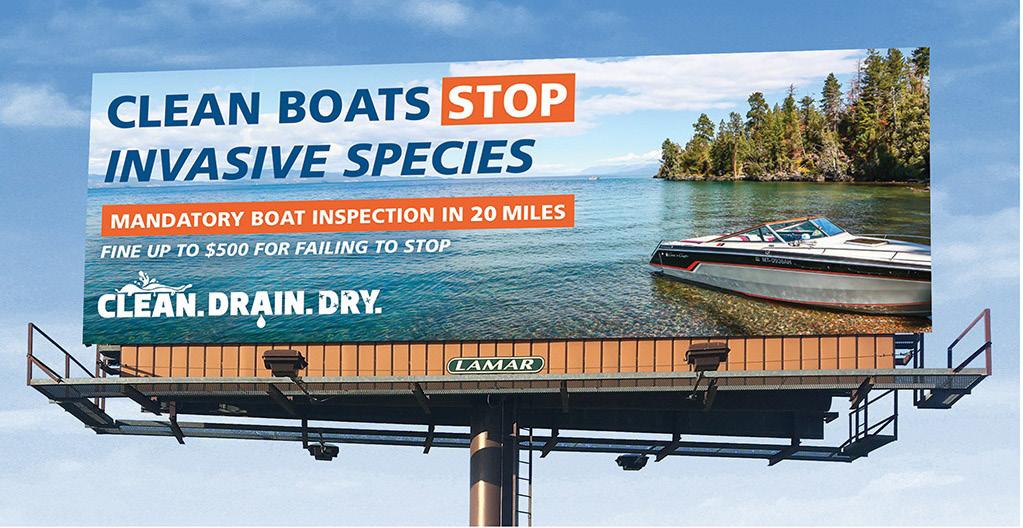
• During the first week of August in 2021 and 2022, the UC³ celebrated Montana’s watercraft inspectors during the first and second annual Watercraft Inspector Appreciation Week. Watercraft inspection stations are the first line of defense to protect Montana’s water from the harmful impacts of AIS and inspectors work at 20+ roadside watercraft inspection stations across the state that are operated by FWP and partner organizations. During appreciation week, advertisements on having a successful inspection were run in local newspapers, a social media campaign launched with the hashtag #LoveYourBoatInspector, celebrations at stations were planned, and stakeholders and the public were encouraged to stop in and thank their watercraft inspectors for all their hard work. We are hoping to make this event a continued annual celebration and recognition of just how important watercraft inspectors are to the management and prevention of AIS in our waterbodies.







•Resulting from discussions on ways to expand our community engagement on the AIS issue, UC³staff designed and developed Clean.Drain.Dry reusable drink coasters to distribute to bars, restaurants, and breweries in the Upper Columbia Basin. There were 20,000 coasters printed and UC³ commission members and partners took on the task of distributing coasters to businesses in their local area. The coasters were a big hit with local establishments and proved to be a great way to reach recreators and water users where they are.
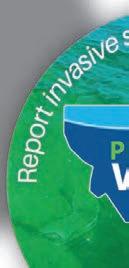
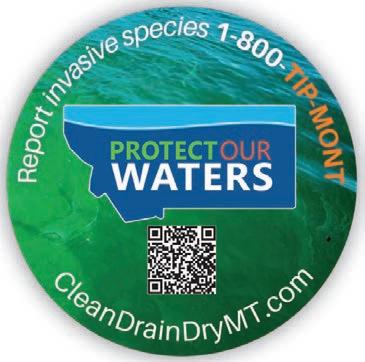
Clean.Drain.Dry drink coasters front and back.
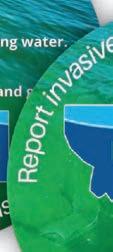
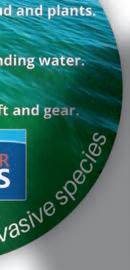




• In partnership with the Montana Fish, Wildlife & Parks (FWP) program and the Montana Invasive Species Council (MISC), UC³ organized and conducted an AIS training for all incoming Big Sky Watershed Corps and Montana State Parks AmeriCorps members. Over the course of two days, 60+ AmeriCorps members were trained on aquatic invasive species information from what species are present in the areas they are serving their term to the importance and procedures of watercraft inspection stations around the state. The members participated in rotating stations that trained them in education tactics to share the Clean.Drain.Dry. and Don’t Let It Loose messages with the public and how to conduct boat inspections, and also gave them a crash course in Community Based Social Marketing geared toward understanding how to change the behavior of the public to further conservation initiatives.






Flowering Rush has whitish pink flowers that grow in umbrellashaped clusters and green triangular stems that can reach 1 to 5 feet in height and can survive in water up to 10 feet deep. It invades long shorelines and margins of slow-moving waterways cutting off recreational swimming and boating potential. Flowering rush is present in the Upper Columbia Basin, most notably in Flathead Lake.

Eurasian watermilfoil grows in thick mats of feathery leaves and erect stalks with small reddish flowers that emerge above the water. Milfoil can quickly take over shallow lakes and rivers, preventing boating, fishing, hunting, and swimming. It spreads by fragmentation, meaning it needs only a small sliver of a leaf to be transported on boats, motors, trailers, fishing nets or other gear to spread. It is present in the Upper Columbia Basin in many lakes and reservoirs, including Cabinet Gorge, Noxon and Thompson Falls reservoirs.
Fragrant Water Lily

Fragrant water lily is most easily recognized by its eye-catching, open bloom of either white or pink petals and wide heart-shaped leaves. The water lily can achieve extraordinary population growth, impair recreation and destabilize underwater ecosystems. It is already present in the Upper Columbia Basin, within Holland Lake, Lake Mary Ronan, Swan Lake, and several other waterways.


Mudsnails are brown to black in color and range in size from a grain of sand to 1/8 inch long. They can outcompete native snails, impact the food chain of native trout, and be transported through vegetation and mud on boats and gear. Mudsnails are present in the Upper Columbia Basin, populating sections of the Missouri, Madison and Bitterroot rivers along with several other reservoirs and waterbodies.

• In partnership with the Missoula County Weed District, the UC³implemented the AIS Industry Outreach Project, engaging water-based businesses with AIS information across the Upper Columbia Basin for the fourth year in a row. In 2022, with the help of our Big Sky Watershed Corps (AmeriCorps) member, Josh Abrahamson, we had the great opportunity to expand and improve our industry outreach efforts.
 Clean.Drain.Dry. partners at the Kingfisher Fly Shop industry outreach visit.
Leslie J. Mehrho , University of Connecticut, Bugwood.org
Alison Fox, University of Florida, Bugwood.org
Brett Marshall, Sault College, Bugwood.org
Clean.Drain.Dry. partners at the Kingfisher Fly Shop industry outreach visit.
Leslie J. Mehrho , University of Connecticut, Bugwood.org
Alison Fox, University of Florida, Bugwood.org
Brett Marshall, Sault College, Bugwood.org
Montana.Theseeventsincluded:
Walk events
• Family Forestry Expo
Twelvedifferenteducationevents wereattended.WiththisJosh reachedpeoplewithquality educationonlocalandnational AISissuesthathaveimpactson Montana.Theseeventsincluded:
• Frenchtown Paddle Days
• Bigfork Whitewater Festival
the Missoula County Weed District (MCWD). With the goal of being the boots of the ground for Aquatic Invasive Species (AIS) industry outreach and education for the Upper Columbia River Basin located in western MT.



Anannualreviewofoutreachandprevention projectsimplementedbyJoshAbrahamson-2022
BigSkyWatershedCorpMember
Anannualreviewofoutreachandprevention projectsimplementedbyJoshAbrahamson-2022 BigSkyWatershedCorpMember
UMEarthDay 3MusselWalkevents FamilyForestryExpo
• Backcountry Hunters & Anglers Rendezvous
• Western Montana Fair
IMPLEMENTED BY JOSH ABRAHAMSON - 2022 BIG SKY
Anannualreviewofoutreachandprevention projectsimplementedbyJoshAbrahamson-2022 BigSkyWatershedCorpMember
This 2022 Big Sky Watershed Corps (BSWC) position split time between the Upper Columbia Conservation Commission (UC3) and the Missoula County Weed District (MCWD). With the goal of being the boots of the ground for Aquatic Invasive Species (AIS) industry outreach and education for the Upper Columbia River Basin located
This 2022 Big Sky Watershed Corps (BSWC) position split time between the Upper Columbia Conservation Commission (UC³) and the Missoula County Weed District (MCWD), with the goal of being the boots on the ground for Aquatic Invasive Species (AIS) industry outreach and education for the Upper Columbia River Basin located in western Montana.
This 2022 Big Sky Watershed Corps (BSWC) position split time between the Upper Columbia Conservation Commission (UC3) and the Missoula County Weed District (MCWD). With the goal of being the boots of the ground for Aquatic Invasive Species (AIS) industry outreach and education for the Upper Columbia River Basin located in western MT.
Watershed Corps (BSWC) position split time between the Upper Columbia Conservation Commission (UC3) and the Missoula County Weed District (MCWD). With the goal of being the boots of the ground for Aquatic Invasive Species (AIS) industry outreach and education for the Upper Columbia River Basin located in western MT.
Fieldwork
This 2022
• Clark Fork Coalition River Clean-Up


• City of Missoula Stormwater Utilities River Clean-up


AlargeportionoftheBSWC memberstermwasspentonAIS preventionfieldwork.Duringthis timethememberwasableto accomplishthefollowing:
AlargeportionoftheBSWC memberstermwasspentonAIS
A large portion of the BSWC members term was spent on AIS prevention field work. During this time the member was able to accomplish the following:
collected71samplesfor invasivemusselmonitoring on5differentwaterbodies Vegetationmonitoringon threewaterbodiesfor FragrantwaterLily Treated75milesoftheClark
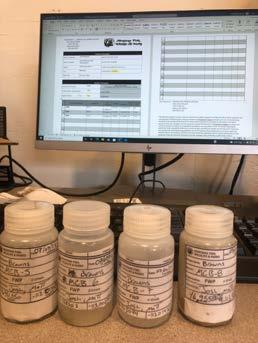
•Collected 71 samples for invasive mussel monitoring on 5 different waterbodies

• Vegetation monitoring on 3 waterbodies for Fragrant water-lily
ForkRiverInvasiveriparian weeds
•Treated 75 miles of the Clark Fork River Invasive riparian weeds


Themainprojectduringtheir termofservicewasindustry outreach.Travelingacrossthe westernsideofthecontinental dividetalkingwithwaterbased businessesaboutAIS.Intotal BSWCMembertraveled 2,000+milesforindustry outreachandevents.Through thisproject65different businesseswerereached.As
Themainprojectduringtheir termofservicewasindustry outreach.Travelingacrossthe westernsideofthecontinental dividetalkingwithwaterbased businessesaboutAIS.Intotal BSWCMembertraveled 2,000+milesforindustry outreachandevents.Through thisproject65different businesseswerereached.As wellastwostafftrainings
The main project during their term of service was industry outreach, traveling across the western side of the continental divide talking with water based businesses about AIS. In total, BSWC members traveled 2,000+ miles for industry outreach and events. Through this project 65 different businesses were reached, as well as two staff trainings.
Themainprojectduringtheir termofservicewasindustry outreach.Travelingacrossthe westernsideofthecontinental dividetalkingwithwaterbased businessesaboutAIS.Intotal BSWCMembertraveled 2,000+milesforindustry outreachandevents.Through thisproject65different businesseswerereached.As
Themainprojectduringtheir termofservicewasindustry outreach.Travelingacrossthe westernsideofthecontinental dividetalkingwithwaterbased businessesaboutAIS.Intotal BSWCMembertraveled 2,000+milesforindustry outreachandevents.Through
•One of the statutory duties of the commission is to develop an annual AIS Early Detection and Monitoring Plan for the Upper Columbia Basin. This was completed by the UC³ staff and Monitoring Committee during the 2022 season and describes the monitoring that was completed in the 2021 season, AIS present in the basin, AIS of concern for the basin, prevention/treatment case studies, and recommendations moving forward. The recommendations include:
Comment on FWP Field Sampling and Laboratory Standard Operating Procedures(as needed)
Annual Early Detection and Monitoring Coordination Meeting and Training
Status: Such a meeting was conducted remotely in 2021 due to COVID-related challenges with meeting in person. In 2022, a virtual survey was conducted with monitoring partners; the results from this survey informed this plan and are added as an appendix. You can view the survey results on the UC³website here.
Database Expansion & Use of Data Application (increase consistency and use across state/basin)
Status: Most of the monitoring partners in the basin are utilizing the FWP data app. Glacier National Park is currently exploring options for adoption.
eDNA Sampling Protocols Refinement(ongoing)
Continue to support the establishment and growth of the Upper Columbia Lakes Network
Status: The UC³ is committed to ensuring the continuance and, ideally, expansion, of the UCLN throughout the Upper Columbia Basin. Operating funds have been committed, and a current contract ensures continuation of UCLN through June of 2025.
Track Veliger Survivability in Ballast Water Studies
Status: While the BOR study continues, two other studies have been completed that shed light on this issue. One is an M.S. Thesis from the University of Minnesota (Doll 2018), and the other is a study by the Utah Division of Wildlife Resources (N. Owens, PowerPoint presentation of results). The Owens study documented high rates of passage and survival of both veligers and small adults (<10mm) through common ballast pumps. Doll (2018) documented >95% mortality of veligers in residual ballast water after 48 hours at 20 degrees C. Both studies concluded recreational boats do pose a veliger transportation risk and Doll (2018) identified ballast tanks and inboard/outboard motors as having the greatest number of veligers compared to other boat areas such as live wells and splash wells, which had few. We continue to await the publication of the BOR findings on this subject.
Develop virtual/video training options for partners and citizen scientists
Status: UC³ has currently committed funds and secured a contractor to produce professional high-quality AIS monitoring training videos.
In addition to the 2021 AIS early detection monitoring location maps that were presented in our 2021 annual report, the 2022 monitoring plan houses an updated mussel invasion potential map for the state of Montana. Dreissenid mussel habitat suitability is based on many factors, including calcium, pH, alkalinity, and temperature. Western jurisdictions often use calcium data as a predictor of potential mussel invasion, including the state of Montana (Figure 3). The majority of lakes within the Upper Columbia Basin fall within the tolerance threshold for invasive mussel habitation if calcium is analyzed independently. Although there is much variability in calcium concentrations between lakes, it is evident that the overall riskbased habitat suitability is high.
Determining lakes that are most suitable for zebra/quagga mussels will be especially important in making management decisions unique to each lake, especially if an infestation occurs. Alkalinity concentrations for all lakes in the NMLN area meet the minimum requirement of 18 mg/L for zebra/quagga mussel habitation (Northwest Montana Lakes Network 2018 Annual Report). Calcium data was collected in the 2021 season and incorporated in a future iteration of the Upper Columbia Basin AIS Early Detection & Monitoring Plan. In addition to water chemistry, it is important to also consider watercraft traffic patterns and use of each waterbody (e.g., more out-of-watershed boat use would suggest a higher AIS introduction risk).
•The UC³ is committed to ensuring the continuance and ideally, expansion of the Upper Columbia Lakes Network (UCLN) in partnership with the Whitefish Lake Institute (WLI). Operating funds have been committed and a current contract ensures continuation of UCLN through June of 2025. The UCLN provides an opportunity to engage lake groups and citizens in long-term water quality stewardship. Several lake monitoring groups exist in northwest Montana, but the UCLN program is specific to AIS and aims to increase consistency in protocols, incorporate new partner groups, add to the volunteer base, and bring on more high-priority lakes that are not currently sampled.

Since the spring of 2019, UCLN has grown into a geographically comprehensive network of volunteers who are trained and equipped to monitor their local lakes for AIS. WLI staff continued to distribute kits and conduct additional individual trainings to interested volunteers in 2022. Trainings covered identifying aquatic invasive plants, water quality monitoring and plankton tow sampling and decontamination techniques and protocols.
In 2022, two new volunteers were trained and equipped with monitoring kits. Horseshoe Lake was added in 2022. From July through September 2022, 17 volunteers collected 62 samples from 21 lakes. All samples were sent to FWP’s lab in Helena, and all sampling data was uploaded into FWP’s AIS Survey 123 database. All samples have been found to have no invasive mussel veligers present.

Current participating groups include:
• Avista (Noxon and Cabinet Reservoirs)
• Clearwater Challenge (Lakes in the Clearwater drainage)
• Friends of Echo Lake
• Friends of Lake Mary Ronan
•Friends of Savage Lake
•Horseshoe Lake
•Lindbergh Lake Homeowners
•Little Bitterroot Lake Association
• Thompson Chain of Lakes (Middle Thompson and Crystal lakes)
• United State Forest Service (McGregor Lake)

• Yaak Valley Forest Council (Alvord, Spar, Vinal and Kilbrennan lakes)
Additional guidance and needed equipment will be provided by WLI program staff for continued sampling in 2023. This program has created an educated and engaged group of citizens and lake associations working to protect their lakes from AIS and participate in the statewide effort led by FWP to keep AIS out of lakes in the Upper Columbia Watershed of Montana.
The UC³ plays a vital role in coordination and collaboration throughout the Upper Columbia Basin. Our goal is to provide a forum to share information, improve communication and enhance partner coordination for AIS issues within the basin. Our strategies to accomplish this goal are:
Strive to be a source of reliable information on the status of all AIS in the Upper Columbia Basin.
Connect with partners and stakeholders beyond the basin to increase information-sharing, networking, collaboration, and building relationships around AIS prevention and management.

Encourage the close cooperation and coordination between federal, state, regional, tribal, and local water resource managers for establishment of comprehensive monitoring, data collection, and interpretation (per statute).
Emphasize appreciation and acknowledge the hard work of staff and partners in AIS prevention and management.
Provide support and assistance as needed to the state’s Watercraft Inspection Stations and general AIS program.
Provide a cooperative and open environment that promotes communication and coordination among all Upper Columbia Basin (and beyond) stakeholders.
Explore options for research of value to AIS program(s) in the Columbia River Basin.

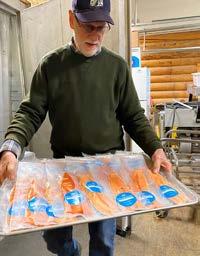
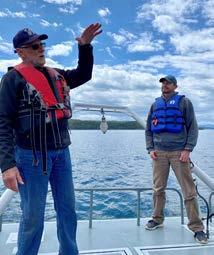
(JULY 1, 2021 – JUNE 30, 2022):
• Georgetown Lake: Clark Fork Watershed Education Program Kids Fly-Fishing Camp AIS outreach (July 27, 2021)
•Basinwide: Watercraft Inspector Appreciation Week (Aug. 1 – 8, 2021)
•Missoula: University of Montana Public Service Academy (Aug. 5 – 6, 2021)
•Kalispell: Flathead Waterways Cleanup AIS outreach (Aug. 14, 2021)
•Missoula: Western Montana Fair AIS outreach (Aug. 11 – 15, 2021)
•Big Sky: Pacific Northwest Economic Region Summit AIS outreach (Aug. 16 – 18, 2021)
•Kalispell: Northwest Montana Fair & Rodeo AIS outreach (Aug. 19 – 22, 2021)
•Virtual: Western Regional Panel Aquatic Nuisance Species (Sept. 21 – 24, 2021)
•Virtual: North American Invasive Species Management Annual Conference (Sept. 27 – 30)
•Missoula: UC³ Fall Meeting with New Member Orientation (Oct. 13, 2021)
•Helena: FWP AIS Winter Meeting (Nov. 9 – 10)
•Kalispell: UC³ Winter Meeting (Feb. 16, 2022)
•Virtual: Watercraft Inspector Training I/II (Feb. 22 – 24, 2022)
•Nationwide: National Invasive Species Awareness Week (Feb. 28 – March 4, 2022)
•Helena: Montana Invasive Species Council Meeting (March 2, 2022)
•Virtual: Crown Managers Partnership Recreation Forum (March 7 – 10, 2022)
•Helena: Big Sky Watershed Corps AIS Training (March 8 – 9, 2022)
•Missoula: University of Montana Earth Day Event AIS Outreach (April 19, 2022)
•Virtual: Governor’s Conference on Tourism & Recreation (April 18 – 19, 2022)
•Polson: CSKT/FLBS Mussel Walks (April 26 – 27, 2022)
•Bigfork: CSKT/FLBS Mussel Walk (May 5, 2022)
•Polson: Crown Managers Partnership Annual Meeting (May 7 – 8, 2022)
•Columbia Falls: Family Forestry Expo AIS Outreach (May 7, 2022)
•Missoula: Backcountry Hunters & Anglers Rendezvous AIS Outreach (May 12 – 14, 2022)
•Bigfork: Bigfork Whitewater Festival (May 27 – 29, 2022)
•Helena: Montana Invasive Species Council Meeting (June 1, 2022)
•Frenchtown: Frenchtown Paddle Days AIS Outreach (June 12, 2022)
•Flathead Lake Biological Station: UC³ Spring/ Summer Meeting (June 15, 2022)
•Virtual: Columbia River Basin AIS Meeting (June 22 – 23, 2022)
59% 41%
State Allocation: $40,000 Bureau of Reclamation Grant: $27,250
*Bureau of Reclamation Grant active 2021 –2024. Total value $58,255 over 3 years, portion for FY22 ~$27,250.
17% 7% 3% 8% 15%
50% 55% 45%
FY22 Expenditures - State Operating Funds $40,000
Travel, Meetings & Sponsorships, $7,000, 17% Monitoring, $3,000, 7% Staff Supplies & Travel, $1,000, 3% Reports & Publications, $3,000, 8% BSWC, $6,000, 15% Education & Outreach, $20,000, 50%
FY22 Expenditures - Bureau of Reclamation Funds $27,250
UCLN Continuation, $15,000, 55% Education & Outreach, $12,250, 45%
